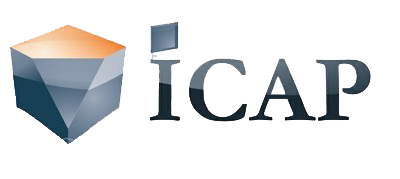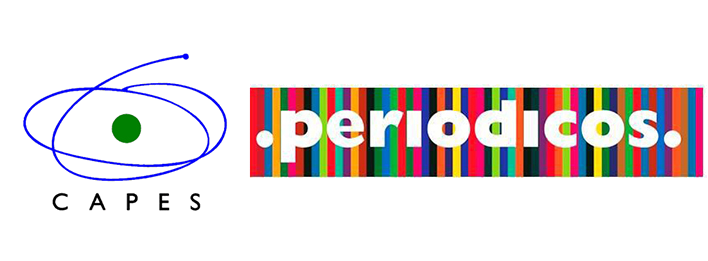A UTILIZAÇÃO DO EYE-TRACKER COMO FERRAMENTA AUXILIAR PARA AUMENTO DA EFICÁCIA NA VISUALIZAÇÃO DAS MÍDIAS EXTERNAS TRADICIONAIS (OOH)
DOI:
https://doi.org/10.29149/mtr.v5i1.5765Palavras-chave:
mídias externas;, visualização; eye-tracker;, atenção consumidor; eficaciaResumo
Existe uma disparidade muito grande entre a quantidade de informações recebidas do ambiente pelo cérebro e a capacidade humana de processamento. Ainda por cima, o boom digital em todos os meios de comunicação tornou mais acirrada a conquista da atenção do consumidor, o que colocou em dúvida a real eficácia das mídias tradicionais. Este estudo exploratório está limitado apenas a análise de mídias externas (OOH) em três experimentos com mídias distintas, buscando avaliar a visualização dos 48 indivíduos participantes, sentados ao lado direito de um veículo em trajeto predefinido e distâncias do experimento definidas. Os resultados do eye tracker mobile apontam para a necessidade dos criadores de OOH de estarem atentos ao posicionamento, e principalmente do layout das mensagens. O mercado quer comprar audiência, capturar a atenção dos consumidores em ambiente de grande poluição visual e concorrência de várias mídias. Um volume enorme de recursos, são desperdiçados porque os OOHs nem sequer são notados pelos consumidores.
Referências
Breva, E. Que hace diferente la publicidad exterior.
Disponível em: http://www.uji.es/bin/publ/edicions/jfi11/25.pdf Acesso em: 08/10/2018
Casarin, V & Martinelli, R A. (2018) Comparative view of urban outdoor advertising (Out-OF-Home_media) regulation: the cases of São Paulo (city) and Rome, Brazilian Journal of Information Design, v. 15, n1.51-59
Christianson, S. A. (1992). The handbook of emotion and memory: Research and theory. Hillsdale, NJ: Erlbaum.
Deppe, M., Schwindt, W., Pieper, A., Kugel, H., Plassmann, H., Kenning, P & Ringelstein, E. B. (2007). Anterior cingulate reflects susceptibility to framing during attractiveness evaluation. NeuroReport, 18(11), 1119–1123.
Dias, S. R. (Coord) (2003) Gestão de Marketing. FGV – EAESP, São Paulo: Saraiva.
Doyon, J., Laforce, R. Jr, Bouchard, G., Gaudreau, D., Roy, J., Poirier, M. & Bouchard, J.-P. (1998). Role of the striatum, cerebellum and frontal lobes in the automatization of a repeated visuomotor sequence of movements. Neuropsychologia, 36(7), 625–641.
Duncan, J. & Humphreys, G. W. (1989). Visual search and stimulus similarity.
Psychological Review, 96(3), 433–458.
Eichenbaum, H. (1994). The hippocampal system and declarative memory in humans and animals: Experimental analysis and historical origins. In D. L. Schacter & E. Tulving (Eds.), Memory Systems (pp. 147–201). Cambridge, MA: MIT Press.
Emarketer (2019) US Social Trends for 2019 Disponível em https://www.emarketer.com/content/us-social-trends-for-2019. Acesso em 21/02/2019
Empresa Pública de Transporte e Circulação (EPTC) (2018) Disponível em http://www2.portoalegre.rs.gov.br/eptc/default.php?p_noticia=128667. Acesso em 23/12/2018
Falk, E. B.; Berkman, E. T. & Lieberman, M. D. (2012). From neural responses
to population behavior: Neural focus group predicts population-level media effects. Psychological Science, 23(5), 439–445.
Farris, P.W.; Bendle, N T.; Pfeifer, P.E. & Reibstein, D. J. (2010). Marketing Metrics: The Definitive Guide to Measuring Marketing Performance. Upper Saddle River, New Jersey: Pearson Education, Inc.
Frith, C. D. & Frith, U. (2008). Implicit and explicit processes in social cognition.
Neuron, 60, 503–510.
Geopath (2018) Powering a smarter OOH. Disponível em https://geopath.org/. Acesso em 4/1/2019
Hiranuma, Y; Doizaki, R,; Shimotai, K,; Sato, H,; Iwamoto, M.; Okana, D.; Toriyabe, S.& Sakamoto, M. (2017) Multiobjective Optimization of Outdoor Advertisement Focusing on Impressions, Attention and Memory, International Journal of Affective Engineering , v16, n 2, 157-163.
Hubert, M., & Kenning, P. (2008). A current overview of consumer neuroscience. Journal of Consumer Behaviour, 7(4–5), 272–292.
Huddleston, P., Behe, B. K., Minahan, S. & Fernandez, R. T. (2015) Seeking attention: An eye tracking study of in-store merchandise displays. International Journal of Retail & Distribution Management, 43(6), 561–574.
Hsu, M. & Yoon, C. (2015). The neuroscience of consumer choice. Current
Opinion in Behavioral Sciences, 5, 116–121.
IAB Brasil (2014) Comitê de Métricas do IAB Brasil Disponível em: https://iabbrasil.com.br/o-uso-do-grp-e-trp-para-planejar-alcance-e-atingir-pessoas-no-online-e-offline/ Acesso em 02/1/2019.
IAB Brasil, (2016a). Boas Praticas – Guia IAB Brasil – Performance 2016. Disponível em https://iabbrasil.com.br/boas-praticas-guia-iab-brasil-performance-2016. Acesso em 04/1 /2019
IAB Brasil (2016b) Guia IAB Brasil de padronização métricas de engajamento. Disponível em: https://iabbrasil.com.br/metricas-de-engajamento Acesso em 04/01/2019
IAB US (2014). Defining and measuring digital ad engagement in a Cross-Platform World – Native Advertising Playbook. Disponível em https://iabbrasil.com.br/boas-praticas-guia-iab-us-native-advertising-playbook/. Acesso em 04/2/2019.
Kantar Ibope Midia TGI (2016) – Pessoas - Finanças e Comportamento do Entrevistado. Disponivel em https://www.kantaribopemedia.com. Acesso em 15/01/2019.
Kastner, S. & Ungerleider, S. (2000). Mechanisms of visual attention in the human cortex. Annual Review of Neuroscience, 23, .315–341.
Klucharev, V., Smidts, A., & Fernández, G. (2008). Brain mechanisms of persuasion: How “expert power” modulates memory and attitudes. Social Cognitive and Affective Neuroscience, 3(4), 353–366.
Knutson B, Adams C.M, Fong G.W, & Hommer D. (2001) Anticipation of increasing monetary reward selectively recruits nucleus accumbens, Journal of Neuroscience, 15; 21(16), 159-178.
Kotler, P. (2017) Marketing 4.0, Rio de Janeiro, ed Sextante
Kringelbach, M. L. & Berridge, K. C. (2012). The joyful mind. Scientific American, v.307, 40–45.
LeDoux, J. (2015). Anxious. New York, NY: Viking.
Lindquist, K. A., Wager, T. D., Kober, H., Bliss-Moreau, E., & Barrett, L. F. (2012). The brain basis of emotion: A meta-analytic review. Behavioral and Brain Sciences, 35, 121–143.
Making Measurement Make Sense -3MS, (2016) Disponível em: http://measurementnow.net/. Acesso em 27/09/2018.
Milosavljevic, M., Navalpakkam, V., Koch, C., & Rangel, A. (2012). Relative visual saliency differences induce sizable bias in consumer choice. Journal of Consumer Psychology, 22(1), 67–74.
Niada, A. C. M. A. A influência da co-criação de produto nas intenções comportamentais do consumidor e o papel da autoconexão com a marca, 2015. 165f .Tese de Doutorado em Administração, Universidade Federal do Paraná, Curitiba, 2015
Pacheco, M. (2000) Cuatro décadas de publicidad exterior en España. Madrid: Ediciones Ciencias Sociales.
Ramos, R. (1987) Propaganda. São Paulo: Global.
Redish, A. D. & Mizumori, S. J. Y. (2015). Memory and decision making. Neurobiology of Learning and Memory, 117, 1–3.
Rilling, J. K. & Sanfey, A. G. (2011). The neuroscience of social decision-making.
Annual Review of Psychology, 62(1), 23–48.
Sethutaman, R.; Tellis, G. J. & Briesch, R. (2011) How well does advertising work? Generalizations from meta-analysis of brand advertising elasticities. Journal of Marketing Research, v. 48, n. 3, 457-471.
Schultz, D. E. (1998) Comunicação Integrada de Marketing. Rio de Janeiro: Qualitymark.
Shaw, S. D & Bagozzi, R.P. The neuropsychology of consumer behavior and marketing. Consumer. Psychology Review. 2018;1, 22–40.
Singer, T. & Tusche, A. (2014). Understanding others: brains mechanisms of theory of mind and empathy. Neuroeconomics. Elsevier
Sissors, J. Z. & Baron, R. B. (2002), Advertising Media Planning, 6th ed., New York: McGraw-Hill.
Smidts, A., Hsu, M., Sanfey, A. G., Boksem, M. A. S., Ebstein, R. B., Huettel, S. A.& Yoon, C. (2014). Advancing consumer neuroscience. Marketing Letters, 25(3), 257–267.
Solnais, C., Andreu-Perez, J., Sánchez-Fernández, J. & Andréu-Abela, J. (2013). The contribution of neuroscience to consumer research: A conceptual framework and empirical review. Journal of Economic Psychology, 36, .68–81.
Sperling, G. (1963). A model for visual memory tasks. Human Factors, 5(1), 19-31.
Stallen, M., Smidts, A., Rijpkema, M., Smit, G., Klucharev, V.& Fernández, G. (2010). Celebrities and shoes on the female brain: The neural correlates of product evaluation in the context of fame. Journal of Economic Psychology, 31(5), 802–811.
Barry, T. (1987). The Development of the Hierarchy of Effects: An Historical Perspective. [S.l.: s.n.] p. Current Issues and Research in Advertising, v12. 251-295.
Turley, L. & Shannon, J.R. (2000). The impact and effectiveness of advertisements in a sports arena. Journal of Service. Marketing. 14 (4), 517-534.
Wolfe, J. M. & Horowitz, T. S. (2004). What attributes guide the deployment of visual attention and how do they do it? Nature Reviews Neuroscience, 5(6), 1–7.
Yoon, C., Gonzalez, R., Bechara, A., Berns, G. S., Dagher, A. A., Dubé, L.& Spence, C. (2012). Decision neuroscience and consumer decision making. Marketing Letters, 23(2), 473–485.
Downloads
Publicado
Como Citar
Edição
Seção
Licença
Copyright (c) 2020 Gabriel Levrini

Este trabalho está licenciado sob uma licença Creative Commons Attribution-NonCommercial 4.0 International License.
Autores que publicam nesta revista concordam com os seguintes termos:
- Autores mantém os direitos autorais e concedem à revista, sem ônus para a mesma, o direito de primeira publicação, com o trabalho simultaneamente licenciado sob a Licença Creative Commons Attribution que permite o compartilhamento do trabalho com reconhecimento da autoria e publicação inicial nesta revista
- Autores têm autorização para assumir contratos adicionais separadamente, para distribuição não-exclusiva da versão do trabalho publicada nesta revista (ex.: publicar em repositório institucional ou como capítulo de livro), com reconhecimento de autoria e publicação inicial nesta revista.
- Autores assumem exclusiva responsabilidade pelas suas opiniões emitidas nos trabalhos publicados nesta revista
















